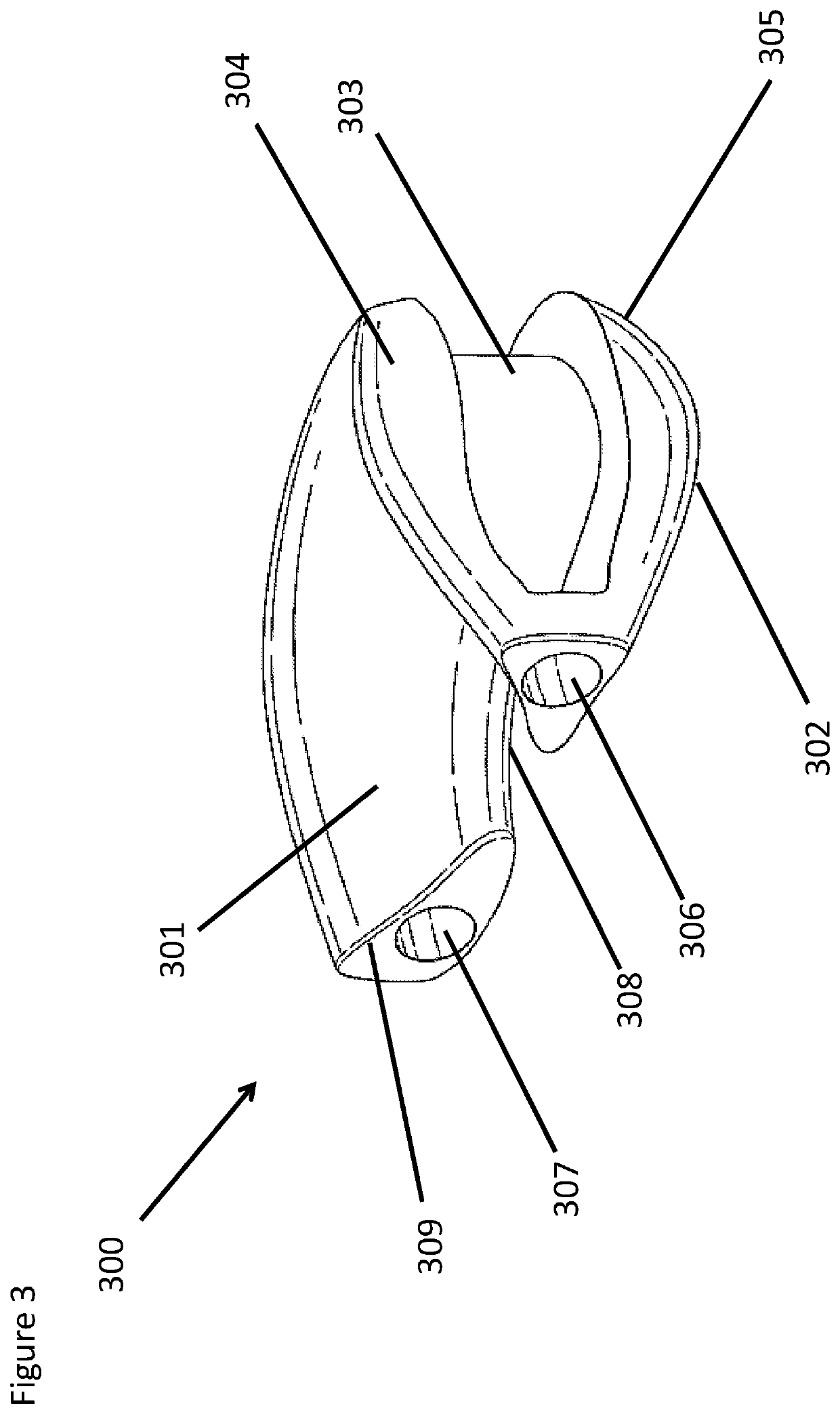Composite joint implant
- Summary
- Abstract
- Description
- Claims
- Application Information
AI Technical Summary
Benefits of technology
Problems solved by technology
Method used
Image
Examples
example 1
Preparation of Multifilament Yarn and Fiber
[0100]Fiber and yarn materials were prepared by melt extrusion and reorientation during a multi-stage drawing using a series of heated Godets. High tenacity poly(ester terephthalate) (HT-PET), ultra-high molecular weight polyethylene (UHMWPE), and polypropylene (PP) monofilament were prepared into monofilament fiber and multi-filament yarn through single or multiple hole spinnerets.
example 2
Polymeric Body
[0101]A polymeric body was shaped and formed into a crescent shaped, semicircular geometry with a trapezoidal, wedge shaped cross section, resembling as closely as possible the anatomical shape of the human natural meniscus, whether the medial or the lateral. The polymeric body features a concave top surface, convex or flat bottom surface. The polymeric body features an internal edge where bottom and top surfaces meet and expand away from each other increasing the thickness of the implant and forming an external edge of the implant. The side of the external edge may feature a recess, cavity or groove which runs at least partly around the entire outer periphery of the body and spans at least a portion of the thickness of the device. The recess can feature a varying depth into the thickness of the body towards the internal edge. The recess can rotate by over 90 degrees and run on the top or bottom surface as it approaches the internal edge at one or both ends of the devi...
example 3
Preparation of Scaffold 1
[0102]Example 2 consisting of the polymeric body and the ligature, reinforcing elements, and scaffold (Examples 3 to 8) can be impregnated using casting, compression molding, solution casting, additive manufacturing or injection molding to fully or partially encapsulate the ligature placed in the external groove of the implant. This can be achieved using injection molding by placing the inlet port for molten polymer around the edge of the polymeric body and encapsulating or coating the textile component. This additional injection molding step would allow Example 2 to be represented in a fully anatomical shape and volume mimicking as close as possible the size and shape of either the medial or the lateral meniscus and also mimic the natural tissue attachment by means of an incorporated ligature. The cavity of the polymeric body can be comprised of a protruding lip on either the top surface, the bottom surface, or both surfaces. The protruding lips of the cavi...
PUM
 Login to View More
Login to View More Abstract
Description
Claims
Application Information
 Login to View More
Login to View More - R&D
- Intellectual Property
- Life Sciences
- Materials
- Tech Scout
- Unparalleled Data Quality
- Higher Quality Content
- 60% Fewer Hallucinations
Browse by: Latest US Patents, China's latest patents, Technical Efficacy Thesaurus, Application Domain, Technology Topic, Popular Technical Reports.
© 2025 PatSnap. All rights reserved.Legal|Privacy policy|Modern Slavery Act Transparency Statement|Sitemap|About US| Contact US: help@patsnap.com



